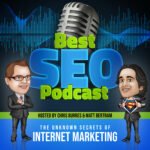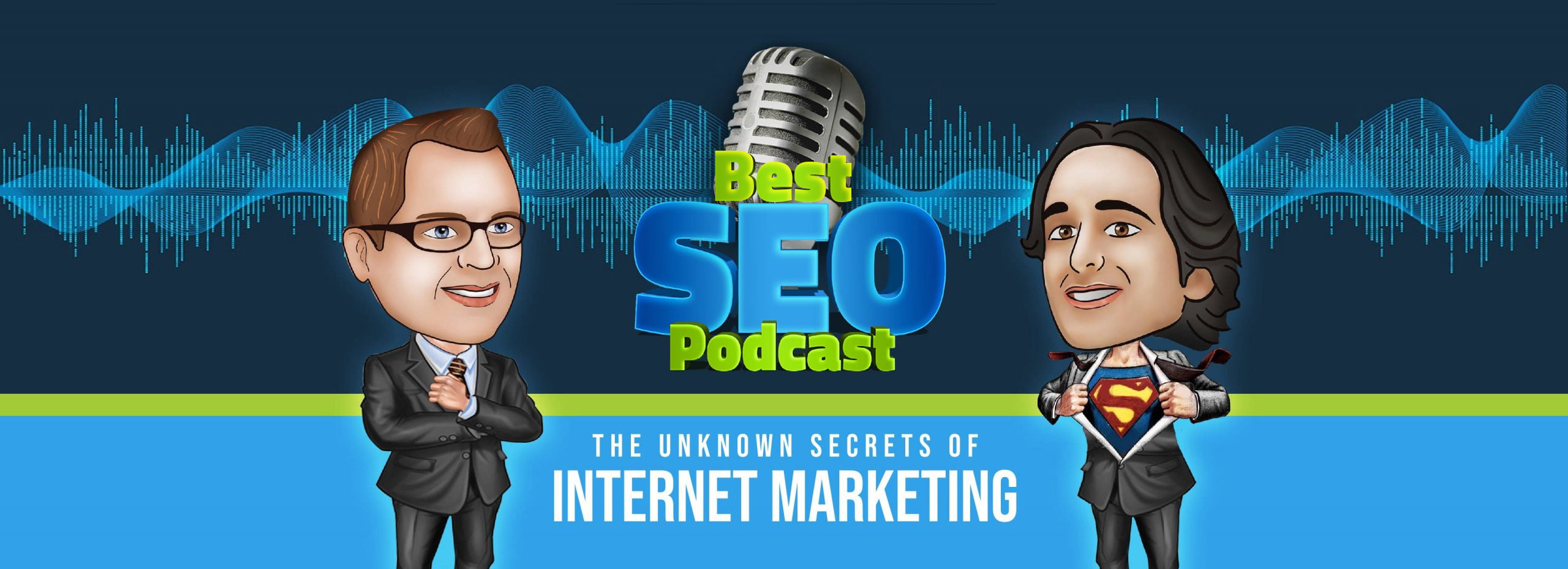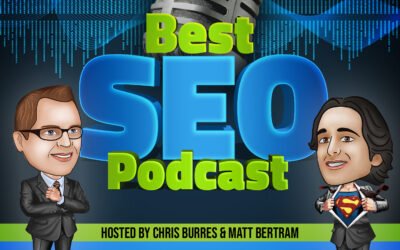

Follow Us On Youtube
Video Transcript
Hi, and welcome to the SEO podcast. I’ve known secrets of internet marketing. My name is Chris verse, one of the owners of EWR digital.
And my name is Matt Bertram. I’m the lead strategist at EWR digital.
Welcome back to another fun-filled edition of our podcast. This is the first podcast in 2022. I think I can share collectively with the entire universe. Thank God, 2020 and 2021 are over. Let’s hope that 2022 looks nothing at all like 20 or 2021 shy guy on that camera. So as we’re launching into this podcast is sponsored by age refs. So let’s jump into their kind of sweet software here. What can a WT that’s H refs webmaster tools make for your website? It can scan your website for a hundred plus common SEO issues that might be hurting its performance and search engines. It browse your websites, backlink data and get actionable insights from your inbound and outbound link profiles.
Learn what keywords your website ranks for and compare how you stack up against your competitors and the SERPs. That’s the search engine results better pages. You always want like some interface where you can see how you rank relative to your competitors. Search engine journal wrote about AWT. It’s hard to believe that something as useful as this free H refs webmaster tool is a killer service. It’s hard to believe it’s free. H refs webmaster tools is in fact a killer service. And did I let me reiterate it’s free. So what you want to do is go to H refs.com forward slash AWT. Let’s spell that out. That’s A H R E F S.com forward slash AWT go check out that software.
We here use a very well paid for version of it, and we started on the free version and it was so good. That’s why we’re using the paid version.
Fantastic. I, I love a trust. I think they do a good job with other things. Even outside of that, with keyword research, with planning, there, it’s a great tool. And if you’re out there, I encourage you to check it out and use it. So,
One of the things that we need you guys to do, hopefully you’re getting some value from this podcast. I was looking at our numbers. This is podcast number 529, but it’s weird because one of the platforms, it looked like there were 900 podcasts up. I don’t know what that discrepancy is, but we’ve been doing this a long time. We’ve been delivering a lot of value to our audience for a long time. And we ask really only one thing from you. And that is that you us a review, please. If you’re watching on YouTube, make sure you subscribe like and smash that notification bell. And if you’re just listening to this and you get some value out of it, do two things. One, share it with a couple of people.
And two, please leave us a review. You can do [email protected] forward slash review. Let’s get into this article. This article probably sounds familiar to Matt since he wrote it. It’s his article. It’s in search engine journal. The title is five on page SEO factors to check in underperforming content. So you want to double check these things on underperforming content, Matt, you said there was a little bit of backstory on this article and like what actually ended up getting posted what was like the whole backstory. Everyone likes the superhero backstory.
Okay. Well first is with the Google algorithm updates. Content is incredibly important. Okay. And so that is really what, one of the bigger drivers of, with some of these updates and, you know, I like to write about stuff that clients have questions about, right? Cause it typically when clients have questions or more than one has a question, others probably have that same question, right. Or it comes up here and there, they might be searching for it online. And so, you know, one of the things I got to ask, and we can maybe talk about this a little bit more for getting into it is how many times can you optimize a page? Right? So like sometimes a client will come to us and we’re working on a page. And then we, you know,
I, I gotta just jump in here. My first thought is how many times has Google changed their algorithm?
Well,
Right. That’s my first thought. How many times can you change a page or optimize a page? How many times this Google changed their algorithm, they should be relevant to each other.
Yeah. I mean, Google changes their algorithm all the time. I mean, they only let us know about these major updates, but there’s so many different factors like where a keyword is placed in a sentence close to anchor text. If you look at some of the IP that Google has, that makes a difference, right? And then you’ve got all these multiple algorithms later and on top of each other, and each time you switch it up, it creates a different layout that gets presented to Google and then Google ranks this efficiently. And that’s one of the big factors of what’s going on is on-page SEO. And so really I was actually, I started out to accomplish with Ryan.
This article was to explain why sometimes a page needs to be optimized more than once and from, you know, a business owner or a lay person looking at this going, Hey, well, you know, if you’re going to do SEO, you’re going to optimize that page and you’re going to be done and it should be pretty straight forward. And so let me ask you this, Chris, as a business owner, as a digital marketer, why is it not as straight forward as you just have to optimize a page once and someone tells you that page is SEO optimized, why isn’t it SEO optimized? And why might you have touch that page again?
Well, I mean, again, one of the things that comes to mind is a potential algorithm change that affects the on-page content. And that certainly has affected if you’re writing legitimate articles and those articles are written kind of for the audience. Yeah. Maybe you don’t need to make changes, but if you’re trying to ride the edges of the system, right. So have as many ad sense ads in it as you want, and they change an algorithm relative to that, you’re going to have touch it again. The other thing is, it also depends on how competitive that particular industry is. Right?
So if you’ve written great content and that ends up in first page, potentially even first position, like if nobody in your sphere is writing any other content, then you might be okay, right. But if you’re in a competitive industry, you also have other people that you’ve got to continually outperform. And I think the general consensus, whether this is true or not in, certainly isn’t true in some cases is that the newest information is the best information. And so I can see a lever and Google’s algorithm, which is like, Hey, this is newer, basically the same. We probably should be showing the newer content, but those are the things that would make me think about re optimizing an SEO from an SEO perspective, a page.
So one of the things that I would maybe add to that is when you’re writing a page, would you consider a page to be optimized potentially for more than one word?
I think, I think that’s a change. I think we, back in the day, we used to optimize it for like multiple words. And now, again, depending on competitiveness you want to optimize for one word and that word could change, like how people search can change. So,
Oh yeah. I mean, so I think maybe a little bit broader context and we can certainly jump into the article here, but it’s a lot of like, you know, Google wants to provide the best solution for the best keyword search possible. Right. And that’s determined by Google. So if you’re trying to optimize for a certain keyword and then Google is trying to show you for another keyword, it means maybe your content needs to be reshuffled a little bit, right. Or of course you could build another page, but it comes back down to Google is trying to offer the absolute best answer for whatever search has done. And again, 75% of all searches are new searches. And so Google is algorithmically trying to figure out where your content should place.
And it’s looking for clues in the, on page of the site and also how people are responding to it to decide where it should show. Right? And so a lot of times you start ranking for one thing and then, you know, to add this additional layer of complexity to it, what you’re doing with interlinking and anchor texts and pushing, you know, SEO juice throughout the site, depending on what you do, everything you do, changes could affect. It’s like reshuffling. It’s like every time you change something, it almost is like, you know, you throw a bunch of dice into whatever and you reshuffle them and you throw them and you get like a different layout. Does that make sense?
And so a lot of times there’s so many different factors and then you, you, you make some changes based on like consistent variables, but sometimes you modify a page multiple times based on what you’re trying to achieve. Also sometimes when we start ranking sites, sometimes we try to rank the homepage first to kind of punch through for certain keywords and then we’ll change how we’ve structured a lot of stuff in the interlinking to maybe try to rank for other pages. And then also, you know, w what’s happening off page. So there’s a lot that that’s potentially happening there.
And I was trying to kind of explain some of that stuff and I started going into some detail and that’s something we should probably do, or I should probably write for our blog for, but I, I started writing this through and, you know, put this article together for SEJ. And as we read through it, you’ll see how much of that got edited out and how much it was left. And I think some of the things that maybe are less controversial or, you know, people like very, very homogenous data is what, you know, I think is representative. And then kind of the funny thing too, to a certain degree, and I’ll share my screen here for those of you on YouTube or Facebook, but as this still got 330 shares and 13,000 reader reads.
But, you know, I was a little disappointed in ultimately what came out of it while I do believe it is quality content. It just kind of got maybe watered down a little bit by, you know, what, what the final edited version was from what I presented. So, but yeah, let’s get into it. So yeah,
Maybe as we go through this, if there’s a, at the points where you’re like, Hey, I would add to that, like you, like, so in January we’re like, Hey, we’re covering an article by Matt. I’m not sure what he’s going to add, or if there’s any opportunity to add. Cause you know, in your first brush of an article would cover everything that you would want to in there. But it sounds like in this case you might have a number of things to add. So.
Right. For Forbes or other publications, sometimes they have like word limits, right. Or sometimes they don’t want touch certain topics. Right. And so SEJ is a great place to maybe go in more depth to offer more of that meat that I think our listeners are looking for. And, but yeah, so I, you know, look, I love SEJ, I love what they’re doing over there. And so I, you know, let’s get into it because I think it’s a great article. So,
All right. Five on page SEO factors to check and underperforming content, the SEO landscape is constantly changing. And so is on page SEO as a result, we now have to think beyond just title and meta descriptions to optimize our pages for major search engines. Ideally you’ll have comprehensive on page SEO strategy that encompasses the best practices and innovative optimizations that will drive long-term SAS success. So tips on which on page SEO elements to start tweaking for better rankings. That’s what we’re going to cover. Let’s first talk about what are the top elements of on-page SEO is broken down into two elements. The first is content, right? That’s include your obviously includes your websites, written visual and video content, and it should focus on providing value to your audience.
Remember, we always say, if you’re providing a good experience to the Google user, Google will look favorably upon you. Your content needs to make good use of your keyword research also. And then the next component is HTA.
I wanted to add something and that’s something. So this is where I went in to talking about a tangental content and basically adding to like the national voice, right on Google on maybe the top two pages, either adding something to something that’s currently written, or maybe writing something that’s a little bit more controversial, but writing about certain topics that are of interest of the trends and like tangental content. So, you know, so that, that part didn’t make it. But I still think what I ended up saying was good. Yes.
All right. So element one, content element two HTML. It’s the default code behind the scenes. This includes items like the title, meta description image, all tags. If you’re not using these elements correctly, then you could be negatively impacting your rankings. What’s a shorter phrase you use for negatively impacting your rankings.
Negatively,
Teeny a and tanking your rankings. Okay.
I don’t use that word, but no. What I would say about this and why I think it’s really important is a lot of time web developers use headers to design the page, and they’re not thinking through what the Google spiders are looking at, right? So they’re just looking at the visual presentation of it. And so when you’re thinking about SEO, you’re thinking about how they’re reading it, but also the massive amount of content that’s created every day. There is no way that humans can fact check or whatever, all this stuff, right? So it’s algorithmically done. And so, you know, spiders are making a lot of these decisions.
AI is making a lot of these decisions and you have to speak that language to them in addition to how people are gonna see and visualize that content. And that’s a big kind of discrepancy that we see a lot with either websites that come to us from clients it’s that the web developers are not looking at that. Right. Again. Got edited out.
Yeah. Yeah. All right. So let’s jump into these five on page.
Oh, oh, another thing. Okay. So I’m going to share my screen here. Sorry. I might be stopping you a few times here. Like not like, okay, so guess what? See this right here, Chris. See this right here.
Yeah.
We made this beautiful image and I don’t know why it doesn’t say this. I don’t know if I’m like zoomed in too much, but it says created by author would not even, you know, say who created it, but it just says created by author. So.
Number of 2021.
So we made like custom, oh, there it is. There it is. Hold on. I gotta show you this for those of you watching.
So it’s a nice image for those of you just listening that breaks down the components of a web page, a title URL, H one SEO content, H two internal links. And then,
Yeah. And this is something just that we’re seeing adding a lot of value to existing blogs, right? If you think about it, you have a blog that uses stock art and how great is stock art, right? Like everybody loves stock art. Like today you want to use it like an original image or a custom image. And if you think about how Google’s valuing it would Google rather see a customer image or stock image. Right. So yeah. So creating custom images, I think a pro tip. All right. Let’s keep it.
Excellent. All right. So number one of the elements that you can check for underperforming pages is written content, right? If your primary purpose of written content is to convert your audience into paying customers, you want to ensure that each page focuses on providing value to your audience and specifically value that leads them down the sales path, right? So not just value in general, but value that leads them down the sales path, make sure that the content you write is making good use of your keyword research, use HTML subheadings to give your content structure and call out topical relevant signals to both readers and search engines. Again, a well-structured page that people can just leaf through and hone in on the particular parts that they want is going to be a much better experience for the Google user.
Yeah. I mean, I think I didn’t go into too much detail here, but like the eat guidelines and the eat updates or the bird update, there’s a number of updates that, you know, happened last year and the end of the last year, before that in expertise, authoritativeness and trust incorporated into a good site structure and just good on-page fundamentals. So it’s broken down clearly where people can understand it. And I mean, if you think about to who the readers are, the majority of the content now that’s being read is on mobile, right. And how people read small bits of information that they can quickly kind of digest is incredibly important and a very well structured site kind of addresses that pretty well.
So those are two things that with the robots and with the people kind of marry together and create that great user experience. So,
All right. So the next factor to take into consideration is your title tags. The title tag is the main element that search engines use to determine what your page is about. The title tags should be focused on the exact keyword that your page is targeting. I like how you put Google has confirmed it as a quote unquote tiny ranking factor. I’m not sure that we would agree that it’s a quote-unquote tiny ranking factor.
Or you see if you want to hear some, I mean, based on my research, Chris, yeah. Titles are the number one thing that the algorithms look at to determine what the contents about in addition to what somebody looked at prior to, right? So they’re looking at the title of this versus the title of what you’ve looked at in the recent past to determine what this content may or not be about or what kind of things that you like as they’re traversing. So title tags, I think from a copywriter standpoint and from an algorithmic standpoint, from everything that I’ve, when I’ve dug in and really read, or like the number one ranking factor, but yeah. Tiny,
Or you could call them tiny it’s however you want to label it. All right. So next is page URLs play an essential role in both SEO and user experience. You should be taking the time to make sure that your URLs contain the right keywords, try to include your target keywords in the URL in a way that makes sense to your audience, including a keyword in the URL is an easy way to help Google determine the content of your page and how it should rank. You also want to ensure that your page URLs are short sweet, and to the point you don’t want long drawn out your URLs.
Yeah. I, I would say at least in a lot of the websites that we’ve been doing recently for enterprise clients, the slug is something that has been not paid attention to whether, if it’s a product site and it’s like auto-generated gobbledygook, or like what the site architecture looks like of how you can understand how the contents organized of what is associated with something else and a slug and site structure, or that URL is incredibly important. And again, less words, more clarity. Right. And so slugs and URLs just like title tags extremely important. So.
Very cool. Yeah. I’ll I’ll yeah. So the next one, so that was the URLs. The next one is image all tags. My brain just shut down for like a second. I had to reboot. I don’t know what.
It is Friday in central time, and I’m sure anybody watching will forgive you suppose that recording is live. This is what time it is.
And we do have a zero edit. If you don’t realize. Now we do have a zero edit policy for our podcasts. So number one, this is five on page SEO factors to check and underperforming content. Number four is image alt text. All text is a description of the image or video that is displayed behind the visual element. For example, if a photo doesn’t render properly, once your webpage fully loads, the Altecs would appear in its place. And that V that way, the viewer can still understand what it is you’re trying to show them. So that’s important to have that Altecs be relevant to it. All texts also ensures that your content is accessible to everyone who views it. These tools become useful for visually and hearing impaired.
I’m sure you have some stuff to add to that.
Yeah. So again, that’s like right. The corporate line, but what I would tell you is this is something that gets it’s easy and it’s something that gets missed consistently right now, either the image is some crazy name and there’s no old texts, right. Or if you even use, if you’re half, right. And you’re like, all right, I’m not going to use a stock photo. I’m gonna use a real photo. And then it’s, I M G right. Underscore whatever one, it won’t be optimized. So I didn’t go into that. But like, the image probably is just this huge, like, if you’re pushing it from your phone, the, a huge size of volume, which is going to slow down your site, and then it’s not. Yeah.
So there’s a process you want to compress these images, but you got to label the images and you want to label the Altecs. So again, the robots understand what the image is, or like you said, the hearing impaired, right. Or the visually impaired. Sorry. So basically it needs to be read to them. If it’s read to them, they need to understand what the image is about. Right. I think it is.
I’m just going to throw this out there. The Google algorithms are visually impaired, Right? So it is, it’s not looking at this picture of whatever the car that you’re about to sell on cars.com and going, oh, that’s a picture of a car, right. It’s looking at that picture and going, Hey, like the alt text says, it’s a car or a red Corvette or whatever. And that’s how I know how to categorize that picture and wait, it’s relevant, relative importance to that particular page at content.
So I, I will say not to go into too much detail on a family podcast, but Y Google did understand what images are. And when it started, it was looking at how much skin was in an image. Okay. And they, it is getting smarter and is getting better. But still, if you think about a Kappa or whatever you want to call it, basically Google doesn’t like robots don’t understand everything yet. Now they’re certainly getting smarter. But yeah, again, Google’s looking for trust signals, right. And if you tell it what this image is and whatever algorithm it’s using to try to determine is that image it, you’re giving it more trust signals that this is actually what it is, right? Yep. Again, one potential pro tip is if possible, right?
You want to have images that are associated with what you’re writing about. Right. And so also higher up on the page, more targeted towards whatever keyword you might be wanting to rank for. So including that keyword in the image, the first image on the page is going to carry more weight. And if you can have an image that’s associated with something you’re talking about towards that target keyword makes a lot of sense to do that. And, you know, really that’s one of the things when we do an audit of a website is we’re looking through, and then we’re going in and we’re adding while we’re compressing the images, we might renaming the images. And then we do the image alt text. Like it’s really, really important.
And I can tell you, so few people do it still, right? So,
Yeah, I think, you know, image alt text is this category number four heading? And I know that we’ll go in and actually change the name of the image file so it can have forms to the standard also. So it’s not just the alt text. You also it’s worth renaming the file. You know, again, if you’re, even if you’re using stock photos, the stock photos don’t often have relevant keyword names for the image. And so you should at least change that. But if you’re using your own images, you’re either coming, you know, I M G underscore 6, 9, 5, 900 or whatever, and you want to update that to, you know, little red Corvette, and then they all tag his little red Corvette, so that you’ve got that content built into there. All right.
Number five, both internal and external links, internal links are the links that point to other content within your website. They hate help Google understand the context of a page and how it relates to other pages on your site, external links. They’re the ones that point outside of your website and do help you build reader trust by linking to reputable sources and offering more information on complex or lesser understood topics. There was a time long ago, I think maybe even before your time, when the thought process and the algorithm supported it, or the results from the algorithm results supported it of outbound links were a drain of your link juice. And then Google just got wise and they’re like, Hey, you know, if you’re linking out to reputable sources, that’s again a good experience to the Google user.
I always like to say, here’s the quintessential bad experience to the Google user. If you’ve in fact, landed on them on a page that is the end of the internet. So there is no outbound links. That’s probably not a good experience for the Google user.
So what I would add to this is from what I’ve read and what I’ve learned as I’ve really digged in over the years to SEO is really what Google wants to see. And the best analogy I can provide is a bow tie. Okay, is you want to be linking to other experts talking about topics, similar to what you’re talking about and supporting what you’re saying. And then you should also be linking out internally to other pieces of information that are similar to, or someone might have an interest in what you’re talking about. So again, it goes back to how content is organized and if you’re linking to, and other people are linking to you, right. Let’s all hold hands. And those are experts, right? So you’re linking out to other experts.
Other experts are linking out to you. And then you’re also connecting in with other content. Again, like there’s multiple layers of this maybe Botox, right. Of similar type of content off page. And on page, what you’re trying to do is you’re trying to all interconnect and experts should refer to experts. Does that make sense? And so that is really what you’re trying to do and how you’re organizing that content. And I don’t think that a lot of SEO’s just from what I’ve seen understand at that kind of level, when they’re doing like inner Seiling or interlinking of what they’re trying to do, right?
Like a lot of times they’re just interlinking for keyword density or, you know, there there’s a lot of different strategies to on page, but I think that, or let’s say tactics to that, but I don’t think a lot of SEOs from what I’ve seen and talked to are going back to the fundamental what’s the overall goal and strategy of what you’re trying to achieve right. In this paragraph. I wanted to, you know, dive into that a little bit more talk about some things, Bruce Clay talks about this to father of SEO. And so I think that interlinking is something that gets missed a lot. And certainly there’s been some updates over the years and Google views it differently. But again, it does come back to what are you doing to benefit the user?
And is that helpful, right? Yeah.
And I think if you just think in terms of pure link juice coming into a page, the place where you have the most, and maybe even the only control, right, the rest is outreach and effort is on your own site. So how you structure your own site is a thing that you’re 100% in control of and has an impact.
Callie. You just touched on something that I didn’t, I didn’t have a, I was not able to cover, which is a whole, you’ll open up a whole other, let’s say, what is it? A can of worms. Link juice? There’s 10 points. Okay. You have 10 points on a page and out of those 10 points, you need to figure out where you want to direct that, that link equity, right. Let’s okay. Link juice, link, equity, whatever the term is. People do not think about this people they’re there. This is a whole nother blog, but link equity, interlinking, what you’re doing while you’re doing it is incredibly important. And there’s not enough thought or strategy being put into that.
And that’s why things are not linking even on like the homepage. For example, you link out to every other page on your website, your website, your homepage is the strongest, you know, provider of link equity to your site. And then you’re basically telling that all your sites equal, right? Every page on your sites equal, how does that help the spiders? Right? So that again, whole another tangent, whole another can of worms, but incredibly important. And on page, understanding this stuff and doing it right, is going to make a huge difference. Golly, I wish I could have provided a lot more context in this article than I was able to, but for those of you, lucky enough to be watching this podcast, hopefully you’re getting some real value here. So,
And if you are, please leave a [email protected] forward slash review. All right. To wrap this up, ensuring your on-page SEO is up to par is a continuous process, and should always be a part of your ongoing SEO strategy. The mat recommends that you should be conducting reviews once a month or more depending on, you know, size of website and actually size of your team is really what that kind of probably boils down to. You can ensure that your on-page SEO is top-notch and that your site generates high quality leads and conversions with the right support. I, I,
Yeah. I mean how I would indeed. I mean, content, I believe like today, right? So a lot of people don’t want to go back and listen to our old podcast because they believe that what’s currently coming out is most relevant. And I would say from really like a tactical standpoint, from a strategy standpoint, a lot of this stuff is pretty evergreen because if you’re not using tactics that are not Google approved, then you don’t have to worry about this so much. But I can tell you to some of these algorithms when they switched the dials a little bit, I’ve found that quality content and well-organized content is the number one ranking factor today. And that is really what we’re focused on and what I’m seeing ranking today.
So for all of you that don’t want to go back and listen to old podcasts, which have a ton of great value in them. I think you can really learn a lot about how to think properly about some of this stuff that is with all these updates, what it really boils down to is this quality content. Are people going to read it? Are people going to share it? Are people gonna like it? And is it adding value to the user? So,
Yeah. Yeah, absolutely. All right. Well that wraps up the article. Great article Matt. Well done. And we are going to ask that you do just to, I don’t know, we’ll start with three things, share this podcast with three people, and then we’ll add one more thing. Please leave us a review and make that review five. Got that. That in, in synchronicity to some degree, anything before we wrap up.
Now, that’s it.
All right. Thank you guys for tuning in, make sure you tune in for the next podcast. If you’re on YouTube, subscribe, like follow smash, that notification bell until the next podcast. My name is Chris Burris.
My name is Matt Bertram.
Bye-bye.
For now.
Enjoying This Episode?



Related Episodes
Episode #564 Yandex Data Leak: The Ranking Factors & The Myths We Found part 2.
Follow Us On Youtube Chris Burres ·00:16 Hi and welcome to the SEO podcast. Unknown secrets of internet marketing. My name is Chris Burris. Matt Bertram ·00:22 And my name is Matt Bertram. Chris Burres ·00:25 Welcome to another fun-filled edition...
#563 Yandex Data Leak: The Ranking Factors & The Myths We Found
Follow Us On Youtube Chris Burres ·00:16 Hi and welcome to the SEO podcast. Unknown secrets of internet marketing. My name is Chris Burris. Matt Bertram ·00:22 And my name is Matt Bertram. Chris Burres ·00:25 Welcome to another fun-filled edition...
#562 How To Track Customers & Revenue From SEO In Your CRM
Follow Us On Youtube Chris Burres ·00:16 Hi and welcome to the SEO podcast. Unknown secrets of internet marketing. My name is Chris Burris. Matt Bertram ·00:22 And my name is Matt Bertram. Chris Burres ·00:25 Welcome to another fun-filled edition...

